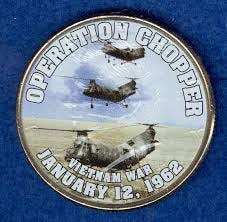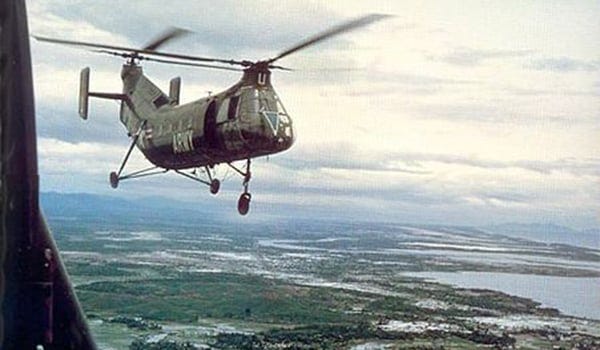On the morning of January 12, 1962, the humid air of South Vietnam buzzed with anticipation as 82 Piasecki H-21 helicopters, colloquially known as "Flying Bananas" due to their distinctive shape, prepared for a mission that would alter the course of modern warfare. Operation Chopper, as it was designated, was about to unfold, marking the United States' first direct combat intervention in what would become a protracted and controversial conflict.
As dawn broke over the lush Vietnamese landscape, American advisors and South Vietnamese commanders huddled over maps, finalizing their audacious plan. Their target: a suspected Viet Cong stronghold nestled in the dense jungle just 10 miles west of Saigon. Traditional ground assault would have been arduous and predictable, but the innovative use of helicopters promised a swift and surprising attack.
The air resonated with the rhythmic thump of rotor blades as the H-21s lifted off in waves. Inside, more than 1,000 South Vietnamese paratroopers sat in tense silence, their minds focused on the impending battle. For many, this would be their first experience of air assault tactics, a concept that was still in its infancy.
As the formation of helicopters approached the target area, the element of surprise proved devastatingly effective. The Viet Cong, accustomed to the slower pace of ground warfare, were caught off guard by the sudden appearance of troops descending from the sky. The paratroopers rapidly deployed, securing a perimeter and pushing into the jungle with a speed and coordination that their adversaries struggled to counter.
The operation unfolded with a precision that belied its experimental nature. American advisors, watching from the sidelines, noted with satisfaction the fluidity of movement and the tactical advantages afforded by the helicopters. The ability to insert troops directly into the heart of enemy territory, bypassing traditional defenses, was proving to be a game-changer.
As the day progressed, the success of the operation became evident. The Viet Cong stronghold crumbled under the onslaught, with many fighters captured or dispersed. A prized underground radio transmitter, a vital link in the enemy's communication network, fell into the hands of the South Vietnamese forces.
However, amidst the jubilation of victory, more astute observers noted the lessons being learned on both sides. The Viet Cong, though defeated in this encounter, were gaining valuable insights into American tactics and technology. These lessons would be meticulously studied and incorporated into their own strategies in the years to come.
As the helicopters lifted off at the end of the day, carrying tired but triumphant troops, few could have predicted the full impact of Operation Chopper. This single day of combat had demonstrated the potential of air mobility in warfare, effectively creating a modern-day cavalry. The success of the operation would influence military doctrine for decades, reshaping how armies around the world approached tactical mobility and rapid deployment.
In the annals of military history, January 12, 1962, stands as a pivotal moment—the day when the concept of air mobility transitioned from theory to practice, forever changing the face of modern warfare.






